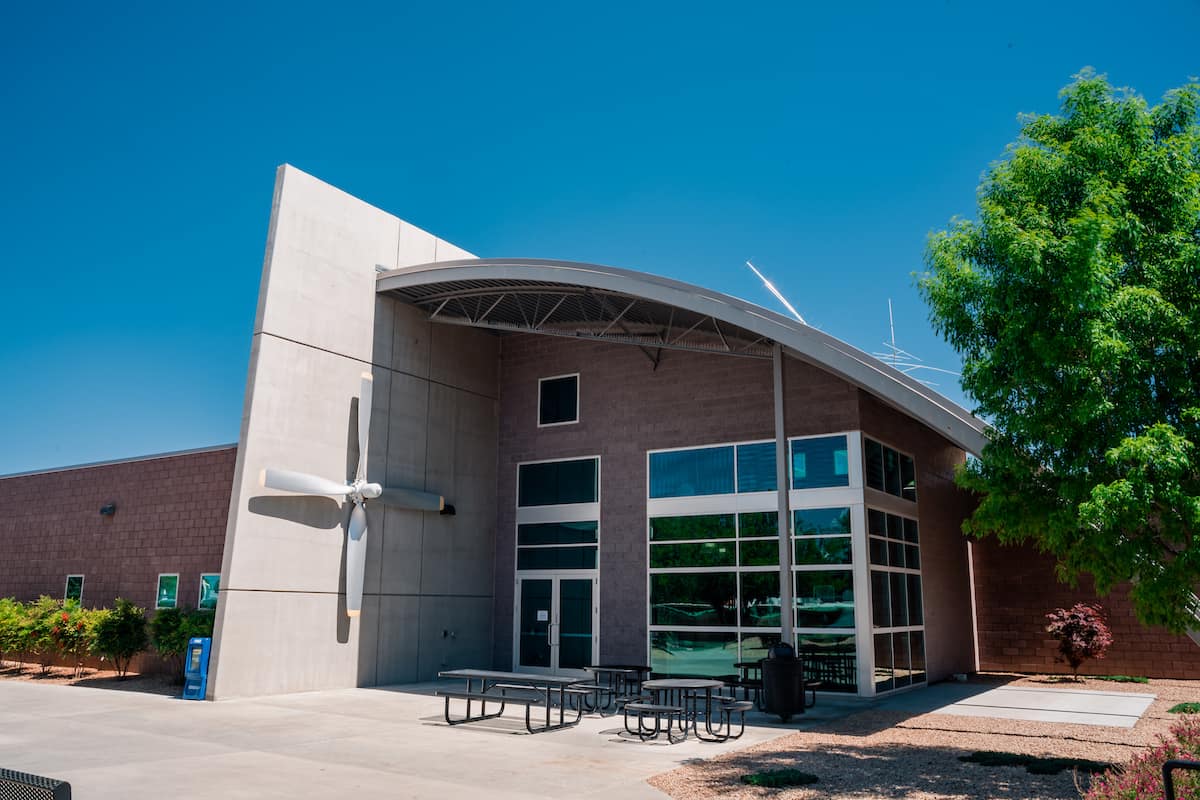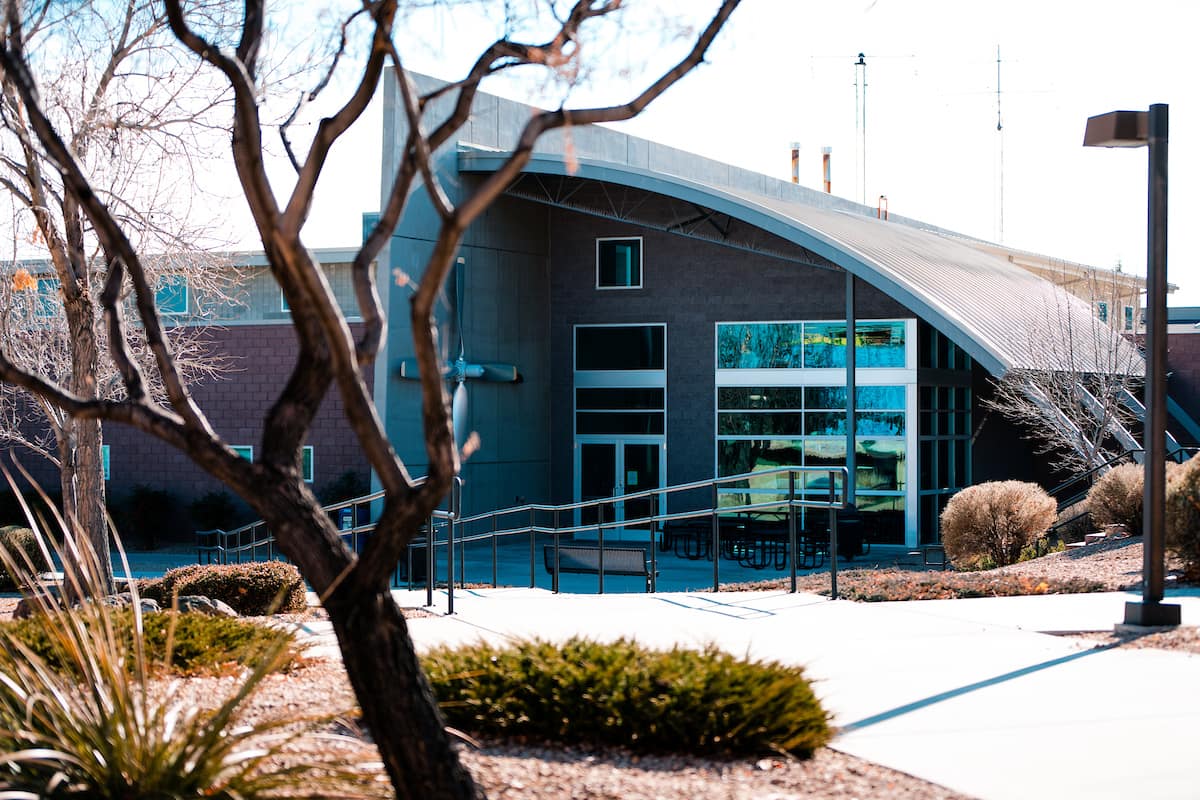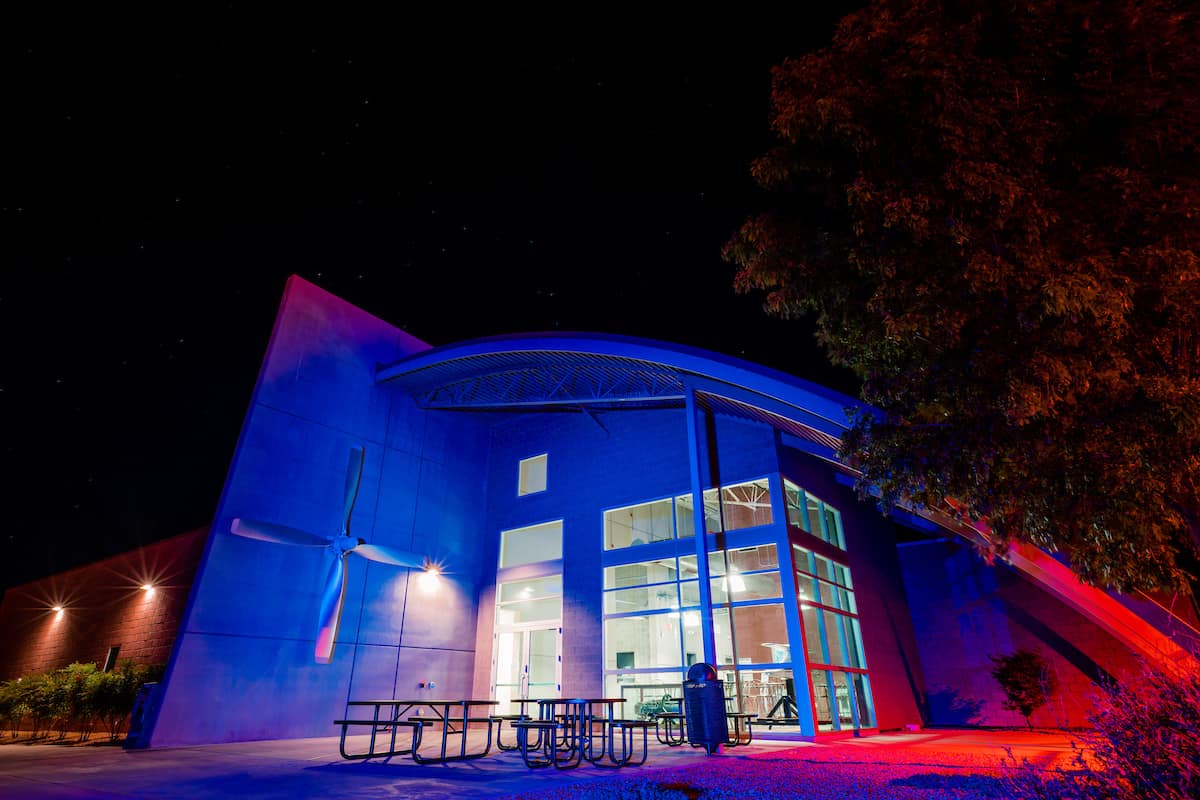The primary use of the Aerospace Experimentation and Fabrication Building (AXFAB) is to provide students with the instruction, resources, and equipment they will need to fabricate and assemble their various projects.
At the heart of the AXFAB facility is the fully equipped machine shop, which is outfitted with separate areas for welding, painting, machining, and materials layout. The facility also has Computer Numerical Control (CNC) metal lathes and a computer-controlled milling machine.
Along with the equipment and tooling available, the machine shop also has a qualified machinist on duty to provide students with instruction on the proper and safe use of equipment.
Along with providing the equipment for students to fabricate aerospace components, the machine shop’s equipment is used to support other labs housed in the Aerospace Experimentation and Fabrication Building.
Labs:
- Astrodynamics Fabrication Laboratory (Room 114): The Astrodynamics Fabrication Lab is a dedicated space for students working on their senior design capstone projects. This room is dedicated to the fabrication and design of our space track design projects.
- Structures Laboratory (Room 115): The Structures Laboratory is designed to enable students to participate in the testing of full-scale aerospace structures to destruction. The lab has a specialized structures floor, which enables students to connect a fixture weighing several tons to the floor, while accessing instrumentation and high-pressure hydraulics from below the flooring. These types of tests represent the macro side of structural dynamics.
- Materials Testing Laboratory (Room 116): Focused primarily on the micro side of structural mechanics, the Materials Testing Laboratory is the central location for students to participate in the preparation and testing of physical material specimens used in aerospace platforms. Students will use a variety of tools, including tensile-testing machines and fatigue-testing equipment.
- Design-Build-Fly Shop (Rooms 118 & 119): The Design-Build-Fly Shop is a new, 2-room work area in AXFAB that supports capstone design projects, engineering competition teams, and CAD courses. Like the Rapid Prototyping Lab, it’s run by students.
- NASA Space Grant Laboratory (Room 118): NASA Space Grant is a NASA funded research internship that can be researched designed and tested here on campus in the Research Lab - 1. This internship is part of a national network of colleges and universities working with NASA to support and enhance science, engineering, education, research, and public outreach programs. Students actually get to work with NASA on aeronautic and space based projects to better understand what is happening in their field.
- EagleSat Laboratory (Room 119): The Eagle Sat is a research and design lab for the Eagle Sat space grant project. The first cubesat design is to create a test bed to analyze the degradation of data on the current solid state memory devices used today such as flash memory, SD cards, memory sticks, etc.
- Materials Science Laboratory (Room 123): This laboratory supports courses in the College of Engineering curriculum in materials science and engineering. Additionally, it serves several faculty research programs in materials science and structures analysis, including studies in fatigue, fracture, and other failure mechanisms, ballistics analysis, composite mechanics, and engineering education.
- Microscopy Laboratory (Room 124): This laboratory supports courses in the College of Engineering curriculum in materials science and engineering. Additionally, it serves several faculty research programs in materials science and structural analysis, allowing users to evaluate composition as well as view, identify and understand the small-scale structures of fractures surfaces, material damage, and material microstructure. Microhardness testing can help identify changes in material properties with various surface and heat treatments.
- Structural Dynamics Laboratory (Room 125): This is one of the most interesting and dynamic laboratories in the AXFAB facility. Its main purpose is to allow students to use the Unholtz-Dickey two-axis electromagnetic shaker table to simulate the vibrational environment of a space launch. Once students in the program have prepared their satellite, rover, or other space hardware, they can use the equipment to see if it would survive the structural loads and vibrations encountered during a launch.
- Space Systems Laboratory (Room 126): The Space Systems Laboratory gives students in the Aeronautical Engineering track of Aerospace Engineering the opportunity to utilize 3-D air bearings to simulate attitude and control of various spacecraft. They will also use the lab’s vacuum chambers to test satellite systems in space-like conditions. The laboratory has a roof-mounted antenna that enables students to track and communicate with satellites and the International Space Station (ISS).
Lab Information
Location: Bldg. 75
Contact Us: To speak to someone about this lab or any of our facilities, call us at 928-777-6600 or 800-888-3728, or email Prescott@erau.edu.



